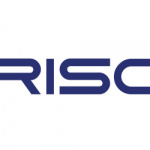The Best of Both Worlds: Combining Classical and Quantum Systems to Meet Supercomputing Demands

(Phys,org) Quantum entanglement is one of the most fundamental and intriguing phenomena in nature. Recent research on entanglement has proven to be a valuable resource for quantum communication and information processing. Now, scientists from Japan have discovered a stable quantum entangled state of two protons on a silicon surface, opening doors to an organic union of classical and quantum computing platforms and potentially strengthening the future of quantum technology.
Recently, a team of scientists in Japan, including Prof. Takahiro Matsumoto from Nagoya City University, Prof. Hidehiko Sugimoto from Chuo University, Dr. Takashi Ohhara from the Japan Atomic Energy Agency, and Dr. Susumu Ikeda from High Energy Accelerator Research Organization, recognized the need for stable qubits. By looking at the surface spin states, the scientists discovered an entangled pair of protons on the surface of a silicon nanocrystal.
The scientists studied the spin states using a technique known as “inelastic neutron scattering spectroscopy” to determine the nature of surface vibrations. By modeling these surface atoms as “harmonic oscillators,” they showed anti-symmetry of protons.
The confluence of proton qubits with contemporary silicon technology could result in an organic union of classical and quantum computing platforms, enabling a much larger number of qubits (106) than currently available (102), and ultra-fast processing for new supercomputing applications.
We could be on the verge of witnessing a technological revolution in quantum computing.



















